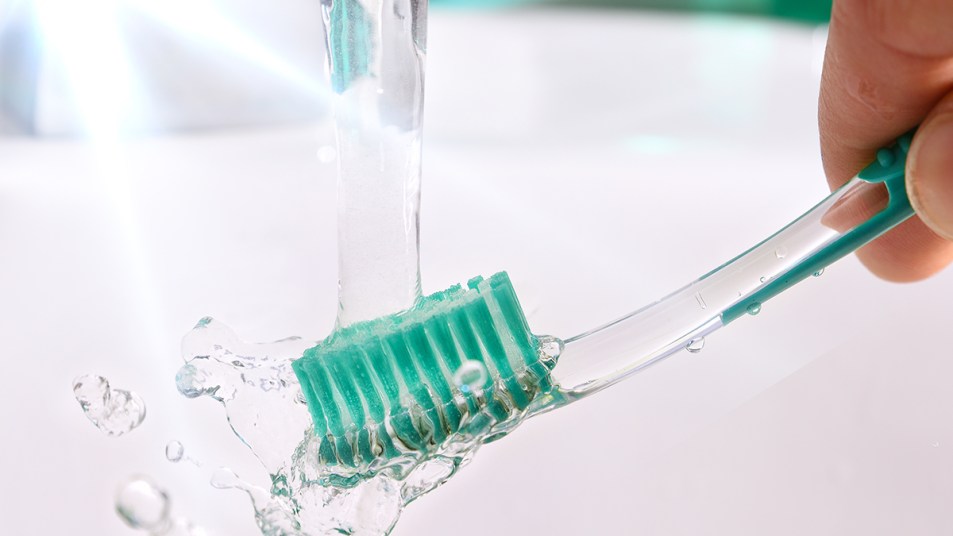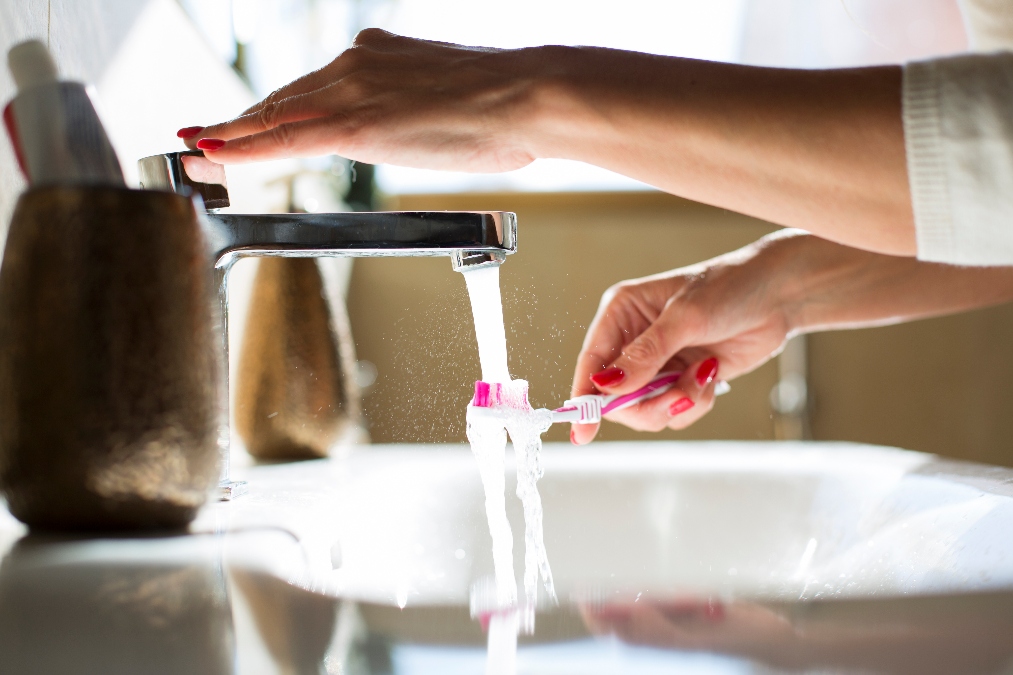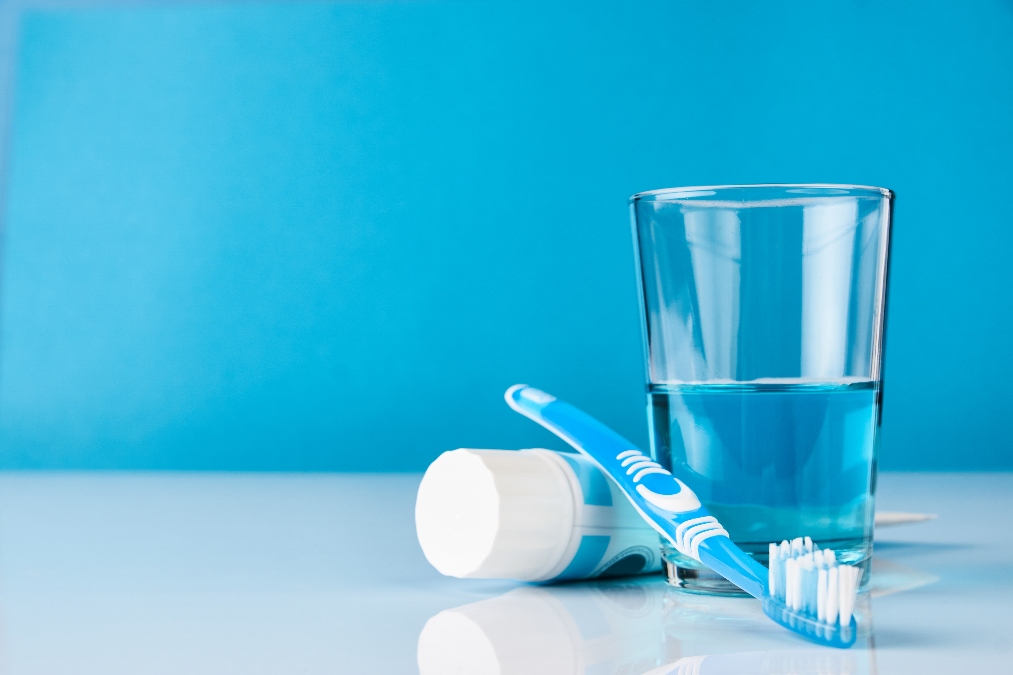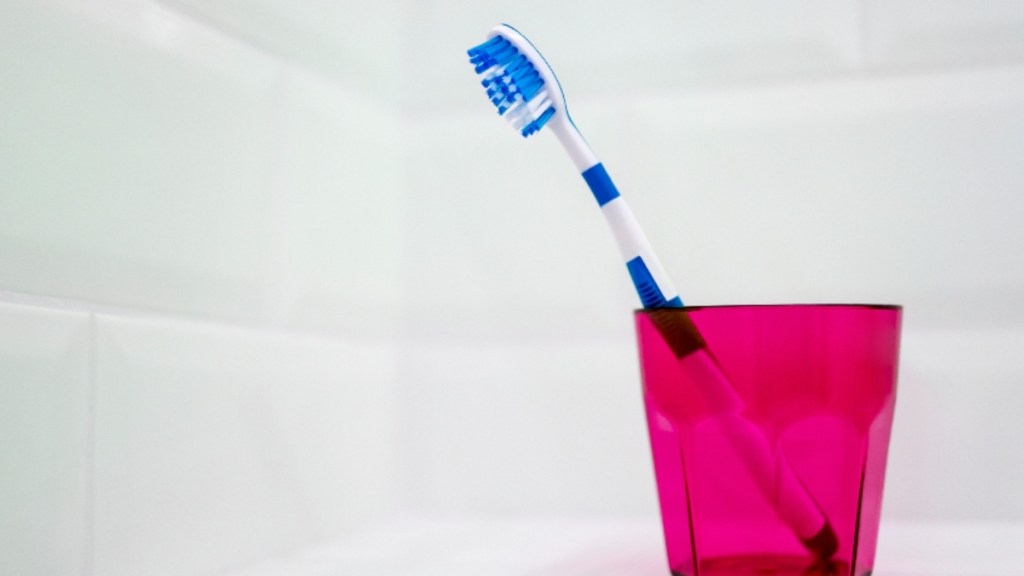Your Toothbrush Is Teeming With Bacteria: Dentists Share How to Clean It
Sick-making germs can linger for up to a week, but these simple tips kill them—fast!

You reach for it twice daily and rely on it to keep your oral hygiene in check. Brushing your teeth regularly prevents cavities, gum disease and harmful plaque. But your trusty toothbrush could be harboring some dirty secrets — and lots of bacteria! Before you toss your toothbrush, keep reading! We asked dentists and other experts for their best tips for how to clean a toothbrush to keep it germ-free. Read on for their advice!
Why we need to clean toothbrushes

Toothbrushes are dirty! One study found that toothbrushes from healthy patients and patients with oral disease contained potentially pathogenic bacteria and viruses such as Staphylococcus aureus, E. coli, Pseudomonas, and herpes simplex virus.
“Bacteria left to build up on the handle and bristles may pose a risk to individuals with bleeding gums, potentially entering the bloodstream and causing dental or general health issues,” explains dental hygienist Julie Seager, RDH, BSDH, Western Regional Education Manager for Xlear, Inc.
Contaminants on toothbrushes don’t only come from your mouth. Dirty hands, countertops and bathroom air can also transfer germs. “With germs surviving on toothbrushes for up to a week, there’s a risk of transferring bacteria between brushes, especially in households where multiple toothbrushes are stored together. If one person is fighting a cold or battling gum disease, the bacteria that lingers can be transmitted between toothbrushes that touch the holder,” says Seager.
To make matters worse, “many people keep their toothbrush next to the toilet, which makes them susceptible to exposure to fecal bacteria,” says Michael Kosdon, DDS. A 2015 study at Quinnipiac University analyzed toothbrushes belonging to students who shared a bathroom and found that 60% contained fecal matter. (Click through to learn how your toothbrush can spur canker sores.)
If that’s not enough to make you toss your toothbrush (or your lunch!), read on to find out why cleaning yours regularly is essential to good oral hygiene.
Related: Dentists Say *This* GI Bother Is a Sneaky Cause of Bad Breath — Plus How To Fix It
How often should you clean a toothbrush?
While toothpaste kills some of the germs, there are still millions of bacteria taking up residence on your brush bristles. “Every time one uses a toothbrush, the brush should be cleaned thoroughly and stored properly,” advises Ira Handshuh, DDS, a White Plains, New York dentist.
Related: Dentists Say These 6 Tips Help Stop Bleeding Gums Naturally
How to clean a toothbrush
Whether you use a high-tech electric toothbrush or a no-frills nonelectric one, experts recommend several ways to get your toothbrush squeaky clean and keep it germ-free. The first entails rinsing it thoroughly in warm water for 30 seconds before and after use to remove residual toothpaste, saliva and bacteria, advises Dr. Kosdon. Shake it dry before placing it back into an upright holder.
Give it a once-weekly deep soak

Once you’re cleaning it daily, soaking it once a week helps give it a deeper clean and makes it last longer. “Soaking your brush in antibacterial alcohol-based mouthwash (like Listerine) for 20 minutes or a 3% Hydrogen Peroxide for 10 minutes after rinsing is taking it to the next level,” says Dr. Kosdon. A 2022 study showed that brushes soaked in Listerine for 20 minutes had significantly less bacteria accumulation on the brush than those without.
Related: Dentists Finally Settle the Debate on Using Mouthwash Before or After Brushing
Don’t have any peroxide or Listerine lying around? Make a solution using equal parts white vinegar and water or bleach and water for a quick disinfection.
Disinfect it with UV lights
“Using an FDA-approved UV toothbrush sanitizer is by far the most effective way to sanitize a toothbrush,” Dr. Kosdon asserts. Indeed, researchers found that sanitizing a toothbrush under UV light reduced brush bacteria by up to 76%. Dr. Kosdon recommends the Philips Sonicare Sanitizer Accessory (buy on Amazon, $37.29), which charges and sanitizes an electric toothbrush in one shot. Repeat once a week.
Give it a quick boil
Suppose you want to go the extra mile — to the kitchen! In that case, Seager says you can boil the bristles in water for about three minutes, holding the brush head in the boiling water so you don’t damage the plastic handle.
Consider an upgrade to silver bristles
Another way to make your brush more sanitary is to use an antimicrobial one. Seager suggests Dr. Plotka’s Mouthwatchers Toothbrush (Buy at Mouth Watchers, $4.99), which has silver-infused bristles that its makers say eliminates 99% of germs that linger after brushing teeth.
How to store your toothbrush

“Ensure your toothbrush isn’t covered during storage. It needs to be in the light and open air to reduce the chance of becoming a breeding ground for bacteria,” says Seager. You also want to make sure your toothbrush doesn’t touch other toothbrushes, as that can quickly spread germs from one to the other. Think: Stash it in a small cup on the counter several feet away from the toilet.
As for those handy travel toothbrush covers and cases? They might keep dirt and germs from getting onto your brush, but they’ll also help the ones already on the brush fester. The solution? Make sure your toothbrush is completely dry before you pack it and choose a holder with holes for ventilation. The pros at the American Dental Association (ADA) warn, “Storing a moist toothbrush in a closed container promotes microbial growth more than leaving it exposed to the open air.”
You might also be tempted to stash it in a medicine cabinet or a bathroom drawer, but that’s a no-no. “The door seals when closed, trapping humidity inside that can cause bacteria to grow on your toothbrush,” says Seager. And remember, you don’t want to store it directly near the toilet to avoid contamination from a flushed toilet.
When to toss your toothbrush
“If the bristles are no longer standing erect, are hard or are starting to bend or flatten like a tree branch with heavy snow on it, then it’s time to toss,” says Dr. Handshuh.
Of course, if you’re sick, toss it immediately afterward to ensure lingering bacteria don’t lead to reinfection. When all else fails, a good rule of thumb is every three to four months, per the ADA. You can set a reminder on your smartphone or set up an auto-delivery on Amazon for a new toothbrush or brush head if you have an electric one, so you never forget to switch it out.
For more on oral health, click through the links below!
These Easy, Surprising Self-Care Tips Can Reverse Gum Disease, Say Dentists
Eucalyptus Oil Is One of Nature’s Best Virus Killers, Says A Growing Body Of Research
Dry Mouth Is Often The First Sign of COVID — and Menopause! — Dentists Explain All













